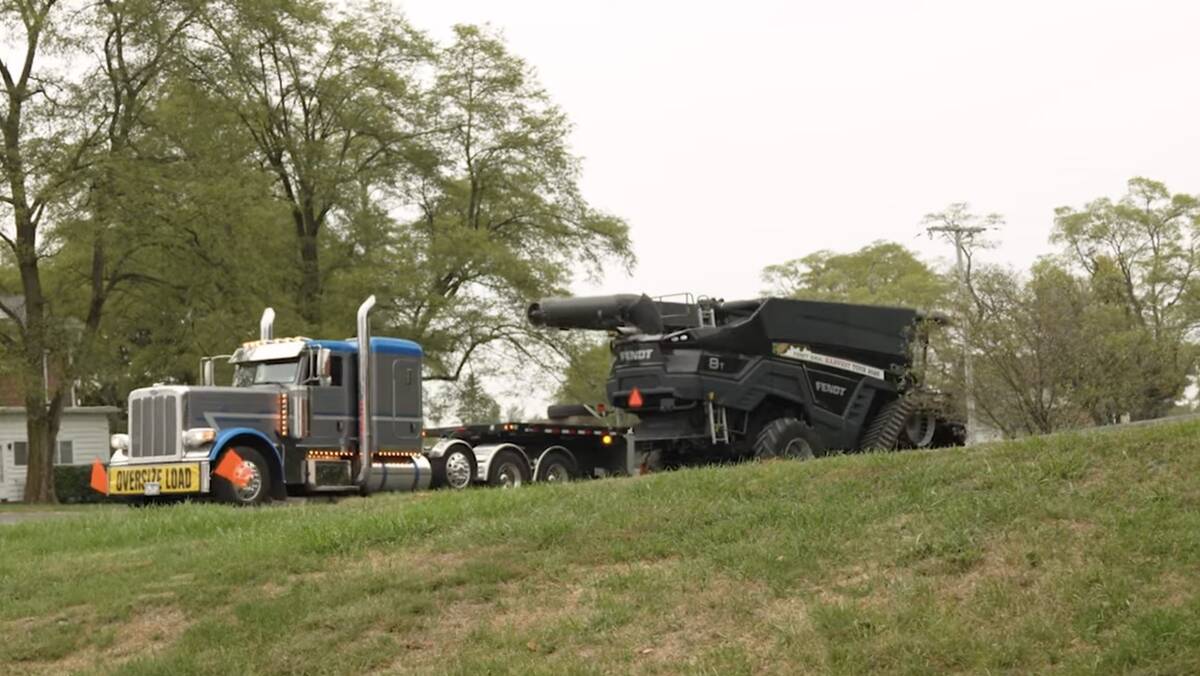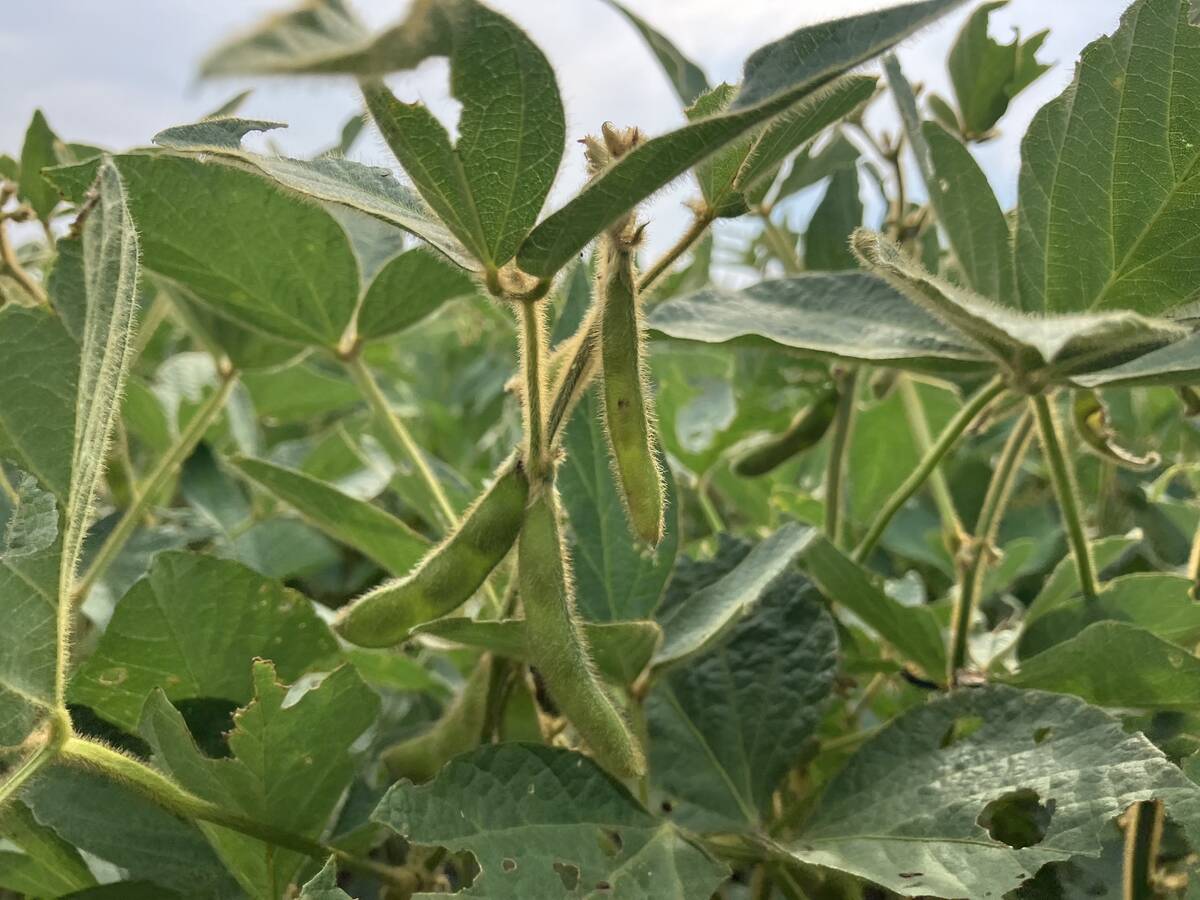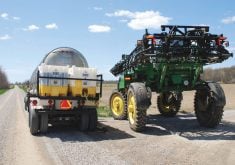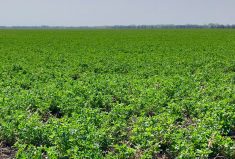WINNIPEG — Tom Wolf is somewhat pleased with a proposed decision from Health Canada that would ban the “over the top” use of dicamba on soybeans.
“I was happy to see it,” said Wolf, a pesticide and spraying expert and the co-owner of Agrimetrix, a Saskatoon company that does research and training for agricultural sprays.
Related story: U.S. soy and cotton growers might use dicamba in 2026
Read Also

Fendt takes a combine on the road in the U.S.
Putting an Ideal combine in fields across different regions has given the brand a chance to prove that the combine is capable of performing well in a variety of conditions.
In a proposed decision released Sept. 17, Health Canada’s Pest Management Regulatory Agency banned the spraying of dicamba on dicamba tolerant (DT) soybeans after the crop starts growing.
Prohibiting “over the top” use of dicamba on DT soybeans should reduce the risk of off-target damage in the future.
“Yes. I would say that is true,” Wolf said.
“They’ve recognized volatility as the bigger cause of drift than droplet drift.”
This is not a final decision because crop science companies, farmers and others have 45 days to comment on the proposal.
Bayer will likely comment, since it sells corn and soybean seeds under the Roundup Ready Xtend brand, which are tolerant to both dicamba and glyphosate.
It allows farmers to spray the crop and control weeds during the growing season.
Bayer Crop Science Canada is assessing the PMRA’s proposed special review decision and the potential impact on the agriculture industry.
“Bayer stands behind the safety of our products, including dicamba, which is an important herbicide for Canadian farmers,” the company said in an email.
“Dicamba complements glyphosate as a critical crop protection tool by controlling certain glyphosate resistant weeds and providing consistent broadleaf residual weed control. Dicamba is a significant tool for growers and was applied to 9.3 million acres of Canadian crop land in 2024 (Source: Ag Data).”
The PMRA has been conducting a special review into the risks of spray drift from dicamba. Its decision will have the following impacts on soybean and corn growers in Canada, the PMRA said:
• Removal of over-the-top applications to DT soybeans after the crop starts growing (post-emergence). Currently, dicamba products can be applied once before planting or emergence, and up to two more times post-emergence.
• Cancellation of its use for DT soybean seed production.
New label requirements include:
• Avoid application when temperatures exceed 25 C, as warmer temperatures can cause dicamba to volatilize and move off-site.
• Lower the maximum plant height for application on DT field corn crop from 76 cm to 50 centimetres.
• Update the size of spray buffer zones for crop and non-crop areas, ranging from one to 115 metres for field sprayers and from 45 to 800 metres for aerial application.
Health Canada looked at and evaluated the risk of spray drift and from dicamba volatilization, where the herbicide evaporates from the soil or plant tissue following application.
Department scientists concluded that “dicamba has the potential to volatilize and move off-site throughout the entire growing season.”
Health Canada looked at reports where dicamba was applied to DT crops and caused damage to nearby agricultural fields or plants. From 2015-25, there were 101 reported cases of damage to non-target plants.
Wolf said the number of drift incidents was likely much higher than 101.
“(Official) notifications are usually the items of last resort,” he said.
“Most reports (of damage) don’t make it to any kind of authority. They’re ignored (by the farmer) … or they’re settled between neighbours.”
Since about 2017, Wolf has questioned the idea of spraying dicamba on top of DT soybeans. He doubts it can be done safely because the risk of evaporation and dicamba moving to another field is too high.
The best option is not to spray it.
“I think when you put the pieces together, any thinking person would say, ‘well, that’s probably the best thing to do,’ ” he said late this summer.
If farmers use the right product and follow the label directions, the risk of drift can be minimized, said Terry Buss, production agronomist with Manitoba Pulse & Soybean Growers.
“Old-fashioned dicamba can drift pretty readily, (but) … the products that are made specifically for soybeans, which are the only ones that are supposed to be used, are less prone to drift.”
One example is Bayer’s XtendiMax with Vapor Grip technology. Bayer says it’s a “low volatility formulation” of dicamba, specifically designed for Roundup Ready Xtend soybeans.
Bayer Crop Science Canada said dicamba has been used in Canada for 45 years and remains an important tool for Canadian farmers.
“Its usage has increased by about three times over the past 10 years because it is an effective tool of key driver weeds, particularly on kochia in the west and Canada Fleabane in the east.”
Bayer, soybean growers and other interested parties have until Nov. 1 to comment on Health Canada’s proposed decision on dicamba.
(With files from Jeff Melchior)
















